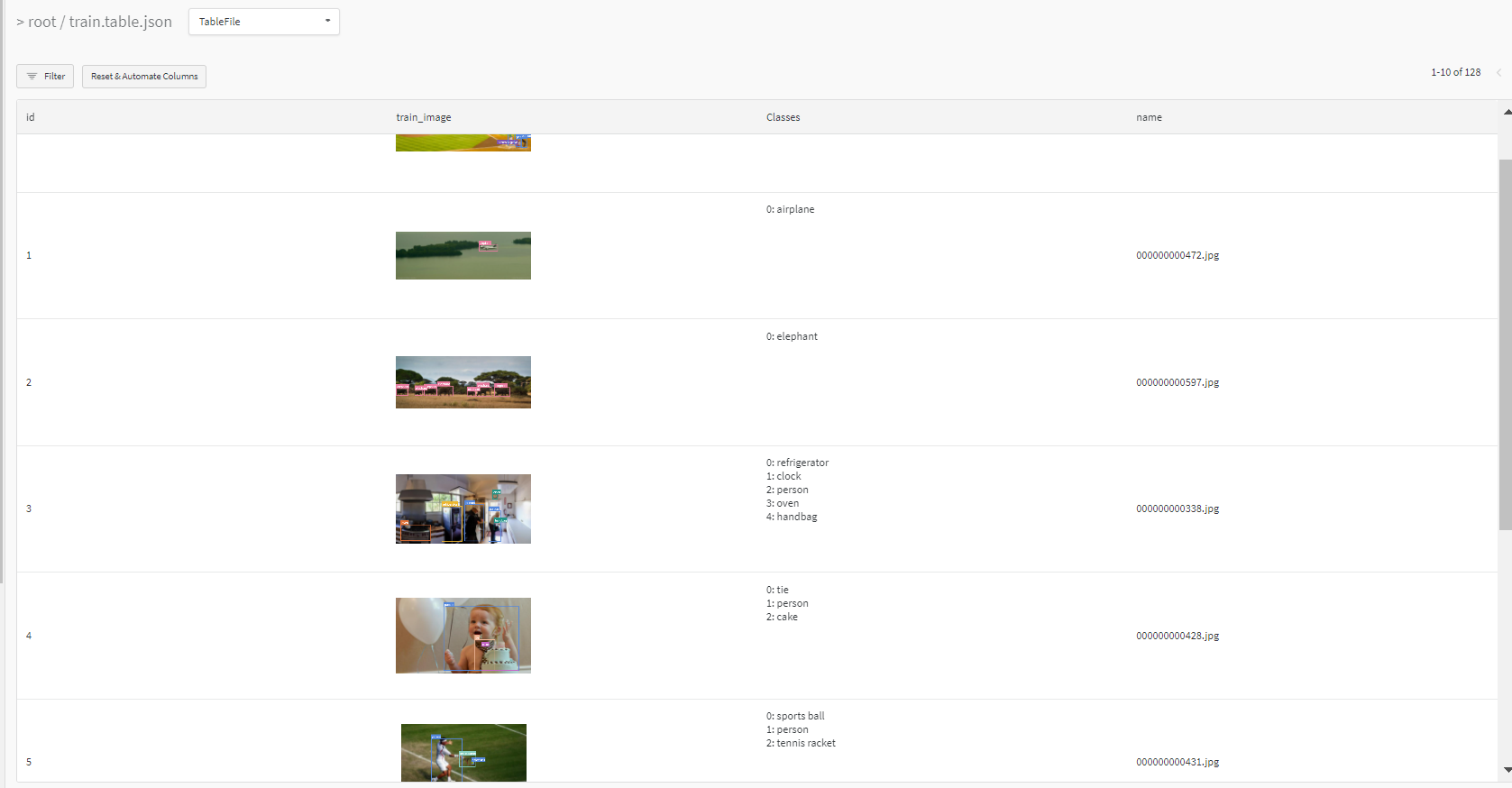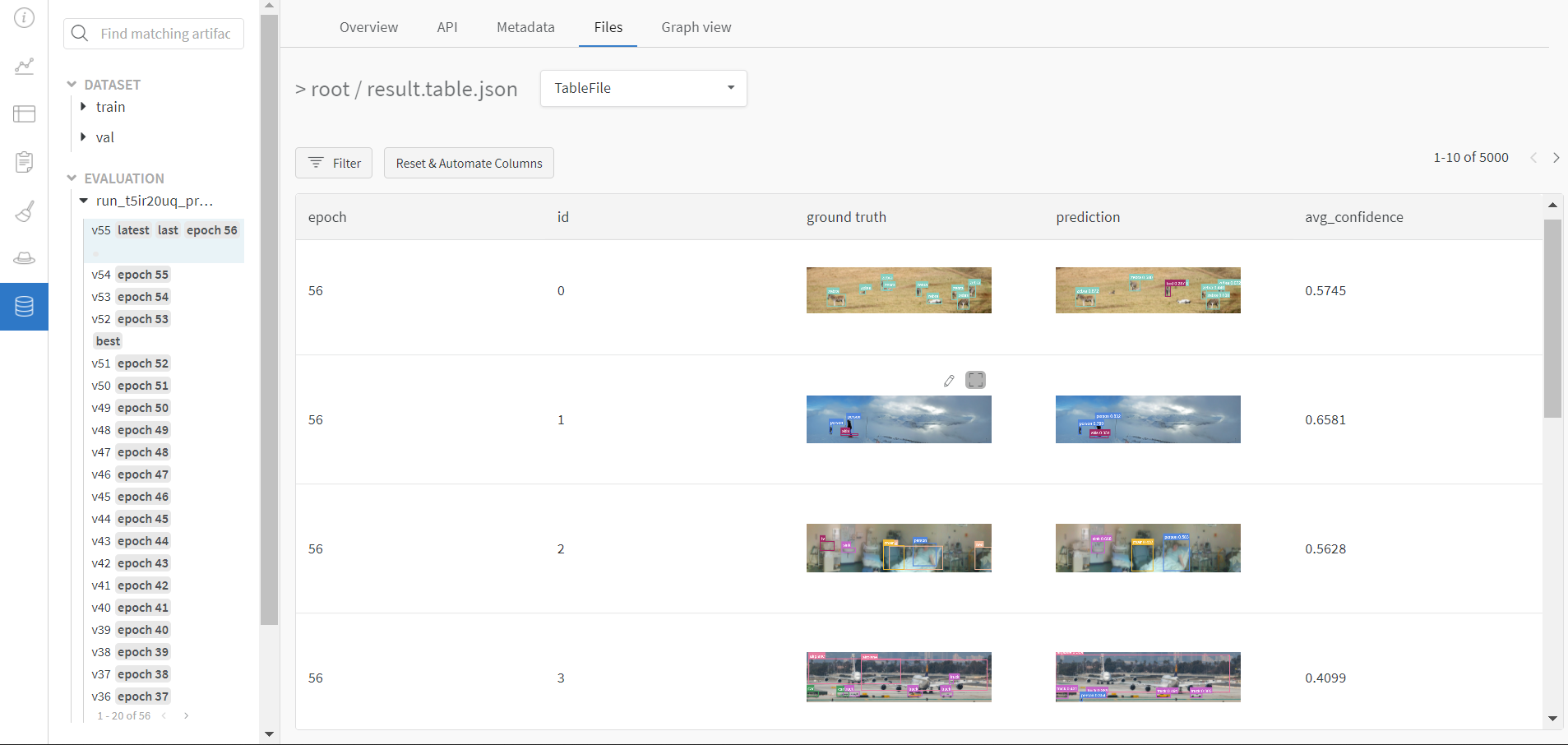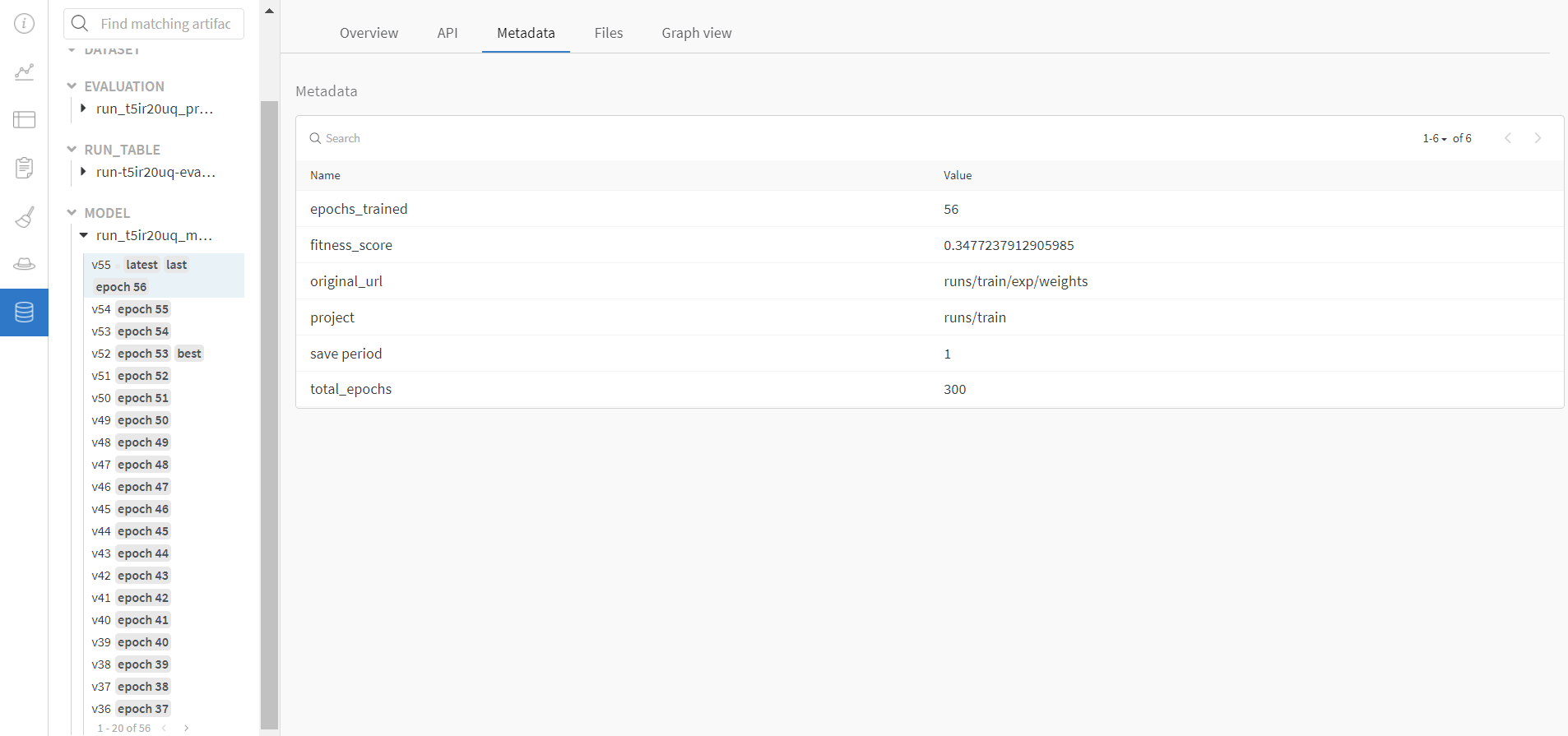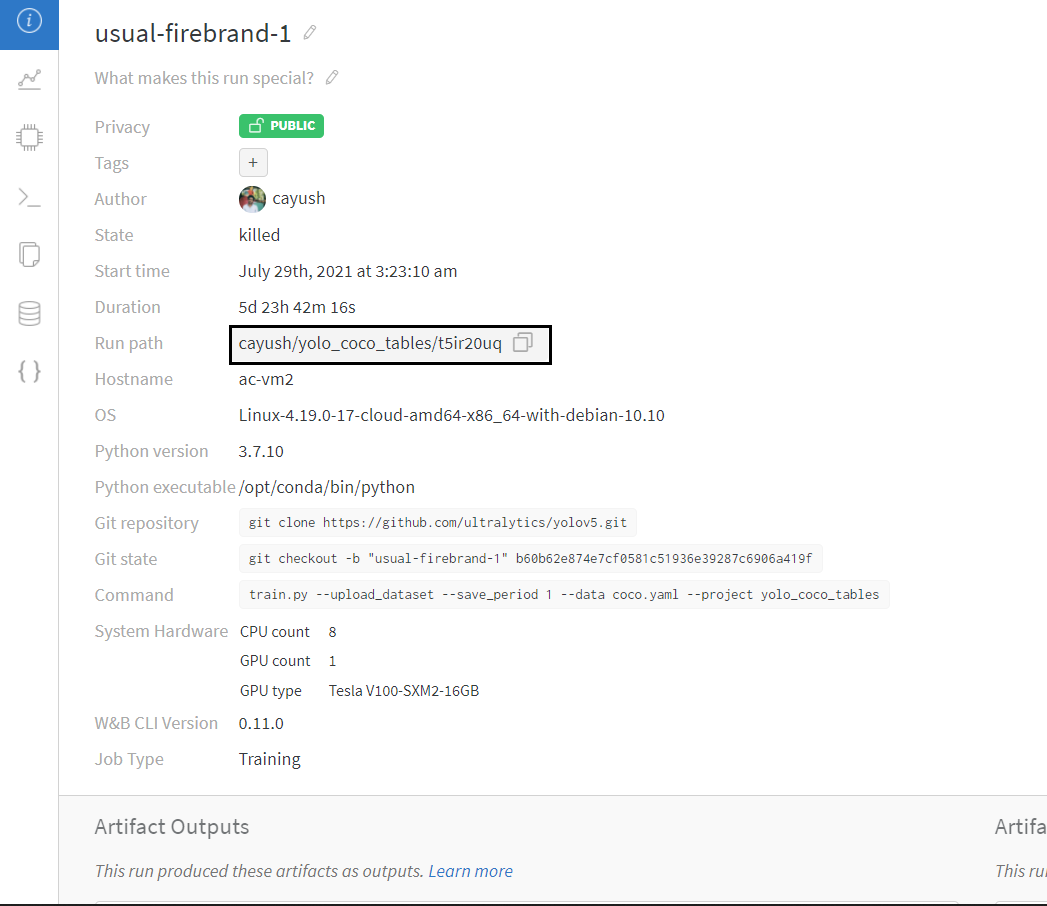馃摎 This guide explains how to use **Weights & Biases** (W&B) with YOLOv5 馃殌.
* [About Weights & Biases](#about-weights-&-biases)
* [First-Time Setup](#first-time-setup)
* [Viewing runs](#viewing-runs)
* [Advanced Usage: Dataset Versioning and Evaluation](#advanced-usage)
* [Reports: Share your work with the world!](#reports)
## About Weights & Biases
Think of [W&B](https://wandb.ai/site?utm_campaign=repo_yolo_wandbtutorial) like GitHub for machine learning models. With a few lines of code, save everything you need to debug, compare and reproduce your models 鈥� architecture, hyperparameters, git commits, model weights, GPU usage, and even datasets and predictions.
Used by top researchers including teams at OpenAI, Lyft, Github, and MILA, W&B is part of the new standard of best practices for machine learning. How W&B can help you optimize your machine learning workflows:
* [Debug](https://wandb.ai/wandb/getting-started/reports/Visualize-Debug-Machine-Learning-Models--VmlldzoyNzY5MDk#Free-2) model performance in real time
* [GPU usage](https://wandb.ai/wandb/getting-started/reports/Visualize-Debug-Machine-Learning-Models--VmlldzoyNzY5MDk#System-4), visualized automatically
* [Custom charts](https://wandb.ai/wandb/customizable-charts/reports/Powerful-Custom-Charts-To-Debug-Model-Peformance--VmlldzoyNzY4ODI) for powerful, extensible visualization
* [Share insights](https://wandb.ai/wandb/getting-started/reports/Visualize-Debug-Machine-Learning-Models--VmlldzoyNzY5MDk#Share-8) interactively with collaborators
* [Optimize hyperparameters](https://docs.wandb.com/sweeps) efficiently
* [Track](https://docs.wandb.com/artifacts) datasets, pipelines, and production models
## First-Time Setup
<details open>
<summary> Toggle Details </summary>
When you first train, W&B will prompt you to create a new account and will generate an **API key** for you. If you are an existing user you can retrieve your key from https://wandb.ai/authorize. This key is used to tell W&B where to log your data. You only need to supply your key once, and then it is remembered on the same device.
W&B will create a cloud **project** (default is 'YOLOv5') for your training runs, and each new training run will be provided a unique run **name** within that project as project/name. You can also manually set your project and run name as:
```shell
$ python train.py --project ... --name ...
```
<img alt="" width="800" src="https://user-images.githubusercontent.com/26833433/98183367-4acbc600-1f08-11eb-9a23-7266a4192355.jpg">
</details>
## Viewing Runs
<details open>
<summary> Toggle Details </summary>
Run information streams from your environment to the W&B cloud console as you train. This allows you to monitor and even cancel runs in <b>realtime</b> . All important information is logged:
* Training & Validation losses
* Metrics: Precision, Recall, mAP@0.5, mAP@0.5:0.95
* Learning Rate over time
* A bounding box debugging panel, showing the training progress over time
* GPU: Type, **GPU Utilization**, power, temperature, **CUDA memory usage**
* System: Disk I/0, CPU utilization, RAM memory usage
* Your trained model as W&B Artifact
* Environment: OS and Python types, Git repository and state, **training command**
<img alt="" width="800" src="https://user-images.githubusercontent.com/26833433/98184457-bd3da580-1f0a-11eb-8461-95d908a71893.jpg">
</details>
## Advanced Usage
You can leverage W&B artifacts and Tables integration to easily visualize and manage your datasets, models and training evaluations. Here are some quick examples to get you started.
<details open>
<h3>1. Visualize and Version Datasets</h3>
Log, visualize, dynamically query, and understand your data with <a href='https://docs.wandb.ai/guides/data-vis/tables'>W&B Tables</a>. You can use the following command to log your dataset as a W&B Table. This will generate a <code>{dataset}_wandb.yaml</code> file which can be used to train from dataset artifact.
<details>
<summary> <b>Usage</b> </summary>
<b>Code</b> <code> $ python utils/logger/wandb/log_dataset.py --project ... --name ... --data .. </code>

</details>
<h3> 2: Train and Log Evaluation simultaneousy </h3>
This is an extension of the previous section, but it'll also training after uploading the dataset. <b> This also evaluation Table</b>
Evaluation table compares your predictions and ground truths across the validation set for each epoch. It uses the references to the already uploaded datasets,
so no images will be uploaded from your system more than once.
<details>
<summary> <b>Usage</b> </summary>
<b>Code</b> <code> $ python utils/logger/wandb/log_dataset.py --data .. --upload_data </code>

</details>
<h3> 3: Train using dataset artifact </h3>
When you upload a dataset as described in the first section, you get a new config file with an added `_wandb` to its name. This file contains the information that
can be used to train a model directly from the dataset artifact. <b> This also logs evaluation </b>
<details>
<summary> <b>Usage</b> </summary>
<b>Code</b> <code> $ python utils/logger/wandb/log_dataset.py --data {data}_wandb.yaml </code>

</details>
<h3> 4: Save model checkpoints as artifacts </h3>
To enable saving and versioning checkpoints of your experiment, pass `--save_period n` with the base cammand, where `n` represents checkpoint interval.
You can also log both the dataset and model checkpoints simultaneously. If not passed, only the final model will be logged
<details>
<summary> <b>Usage</b> </summary>
<b>Code</b> <code> $ python train.py --save_period 1 </code>

</details>
</details>
<h3> 5: Resume runs from checkpoint artifacts. </h3>
Any run can be resumed using artifacts if the <code>--resume</code> argument starts with聽<code>wandb-artifact://</code>聽prefix followed by the run path, i.e,聽<code>wandb-artifact://username/project/runid </code>. This doesn't require the model checkpoint to be present on the local system.
<details>
<summary> <b>Usage</b> </summary>
<b>Code</b> <code> $ python train.py --resume wandb-artifact://{run_path} </code>

</details>
<h3> 6: Resume runs from dataset artifact & checkpoint artifacts. </h3>
<b> Local dataset or model checkpoints are not required. This can be used to resume runs directly on a different device </b>
The syntax is same as the previous section, but you'll need to lof both the dataset and model checkpoints as artifacts, i.e, set bot <code>--upload_dataset</code> or
train from <code>_wandb.yaml</code> file and set <code>--save_period</code>
<details>
<summary> <b>Usage</b> </summary>
<b>Code</b> <code> $ python train.py --resume wandb-artifact://{run_path} </code>

</details>
</details>
<h3> Reports </h3>
W&B Reports can be created from your saved runs for sharing online. Once a report is created you will receive a link you can use to publically share your results. Here is an example report created from the COCO128 tutorial trainings of all four YOLOv5 models ([link](https://wandb.ai/glenn-jocher/yolov5_tutorial/reports/YOLOv5-COCO128-Tutorial-Results--VmlldzozMDI5OTY)).
<img alt="" width="800" src="https://user-images.gith

妄北y
- 粉丝: 2w+
- 资源: 1万+
最新资源
- java图书管理系统(源码+数据库+开题报告+两份毕业论文).zip
- java学生教务系统管理系统(源码+数据库+开题报告+两份毕业论文).zip
- 电机模型中的电压方程、PI控制器与PLL锁相环的标幺化处理详解及采样时间研究,电机模型中的电压方程、PI控制器与PLL锁相环的标幺化处理详解及采样时间研究,电压方程标幺化、PI标幺化、锁相环PLL标幺
- 语音编辑软件,用于处理语音用于大模型训练
- 基于SSM的高校图书管理系统-源码+数据库
- COMSOL模拟燃料电池冷启动过程:温度、电流、物质浓度等分布研究,COMSOL燃料电池冷启动仿真模型:探索冰形成、温度电流分布及物质浓度等特性,三种启动方式全面解析,COMSOL 燃料电池,冷启动仿
- 基于OpenSees平台建立的单柱墩模型:考虑滑移粘接捏缩效应,包含建模全过程、钢筋混凝土粘接滑移及位移控制滞回分析代码实践,基于OpenSees平台建立的单柱墩模型滑移粘接分析及其建模全过程与滞回分
- “国家级大数据综合试验区”试点城市DID(2000-2022年).zip
- deepseekr1 技术报告,中文版
- 群智能算法优化BP神经网络:结合思维进化算法与两层BP,高效全局搜索与局部优化,预测回归数据新策略,基于思维进化算法优化BP神经网络:全局搜索与局部拟合的高效组合,两层BP预测回归新探 ,群智能算法优
- 基于STM32F4xx的永磁同步电机(PMSM)控制器电路设计及其Simulink模型代码自动生成研究,基于STM32F4xx的永磁同步电机(PMSM)控制器电路设计及其Simulink模型代码自动生
- 最全面的MTK手机开发平台MTK资料大全(最新版)
- 机器视觉技术:OpenCV与Qt驱动的工业相机图像采集与处理实践-卡尺工具辅助下的找线、找圆、颜色检测及模板与形状匹配算法封装与调用,机器视觉技术:OpenCV与Qt驱动的工业相机图像采集与处理全解
- PSI5标准协议:V2.1
- 基于MATLAB的智能优化:改进带记忆模拟退火算法在TSP问题中的应用及性能测试,基于MATLAB的带记忆模拟退火算法:TSP问题求解及多普勒降温曲线应用研究,基于matlab的改进的带记忆的模拟 火
- 8.python-OpenCV2024-10-05.wmv
资源上传下载、课程学习等过程中有任何疑问或建议,欢迎提出宝贵意见哦~我们会及时处理!
点击此处反馈



















